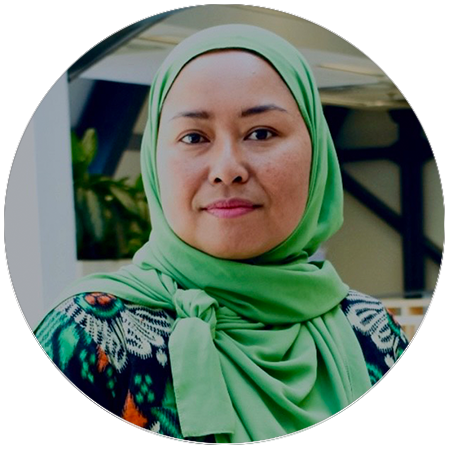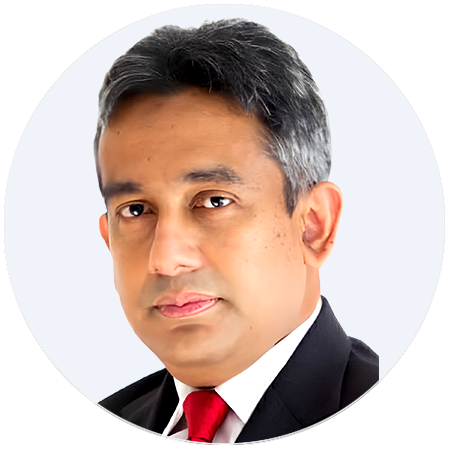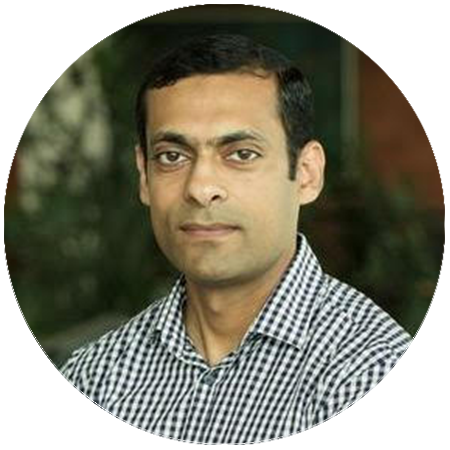MyNOG-11 Conference Speakers

Aditya Kaul
Juniper Networks

Lia Hestina
RIPE NCC

Nor Fadzilah binti Abdullah
Universiti Kebangsaan Malaysia (UKM)
Billy Lee Kok Chi
CSF Advisers Sdn Bhd

Thomas Weible
Flexoptix
Clement Larroque
Orange International Carriers
Datuk Ahmad Zaki Zahid
Digital Nasional Berhad (DNB)
Chief Strategy Officer
Datuk Ahmad Zaki serves as the Chief Strategy Officer of Digital Nasional Berhad (DNB). Currently, he is also the Acting Co-CEO of DNB.
Datuk Ahmad Zaki has more than 25 years’ experience in executive leadership, strategy and Government policy, entrepreneurship and regulatory work. He has held leadership roles in Government-Linked Companies, as well as public listed and private entities. In the Government, he has served at the Prime Minister’s Department, Ministry of Finance, Ministry of Youth and Sports, Securities Commission and National Institutes of Biotechnology Malaysia.
Datuk Ahmad Zaki holds a law degree from the University of Bristol, United Kingdom and a Certificate in Legal Practice from the Malaysian Bar.
Malaysia’s unique approach to kickstart the deployment of 5G network
The deployment of 5G network in Malaysia attracted considerable discussion and debate from Telcos, analysts and other interested parties due to its unique and bold approach. In contrast to other countries that adopted a more conventional approach of spectrum provisioning/ auctioning for the deployment of 5G networks, Malaysia adopted the Single Wholesale Network (SWN) model to deploy its 5G infrastructure. The justification behind this unique decision is to ensure the 5G network can be rolled out at an accelerated rate, allowing Malaysia to catch up to other countries in the region who have already provided 5G services to their populations. The SWN model was also selected to ensure cost saving and efficient use of resources, and to ensure equitable 5G access across urban and rural landscapes in the country.
The presentation will outline the journey DNB has taken to accelerate the 5G network deployment in Malaysia, challenges it overcame and its ongoing commitment to delivering an award winning world-class 5G network to serve Malaysia’s digital ambitions.

Paul Wilson
APNIC
Director General
Paul Wilson has served for over 25 years as the Director General of APNIC, the Regional Internet address Registry for the Asia Pacific. In this time, he has led APNIC to success as an independent non-profit provider of critical resource services, technical assistance and capacity building for Internet development throughout the region. Paul has worked as an expert and leader across the full range of communities and organizations involved in Internet development, including ISPs and network operators, non-profit organizations, governments and governmental agencies; and with many key organizations including RIRs, the IETF, ICANN, ISOC, APEC-TEL, the ITU and others.
IP Addressing – Past, Present and Future
In this keynote presentation Paul Wilson will provide a technical background of the IP protocols and how IP addresses have been managed in the last 30 years. It will explain history, technology and governance of these unique identifiers in a friendly, non-technical and easy to understand, with common analogies and actual data, to develop a case for additional commitments in an already mature IPv6 environment such as Malaysia.
Thomas Corre
NOKIA
IP regional Product Line Manager and Consulting Engineer
Thomas is a regional Product Line Manager and Consulting Engineer at Nokia with 13+ years of experience in IP/MPLS architecture engineering and presales. Throughout his career, he has focused on EMEA and APAC customers, gaining extensive knowledge in Cloud computing, IP Routing technologies, and 5G Anyhaul. As a regular speaker at Telecom SudParis for “Advanced Network Architecture” specialization, he has solid experience in providing customer workshops/technical training courses and understanding their networking needs.
Containerlab: Unleashing the power of containerization for network testing and development
With the growing number of containerized Network Operating Systems grows the demand to easily run them in the user-defined, versatile lab topologies. Unfortunately, container orchestration tools like docker-compose are not a good fit for that purpose, as they do not allow a user to easily create connections between the containers which define a topology. Containerlab provides a CLI for orchestrating and managing container-based networking labs. It starts the containers, builds a virtual wiring between them to create lab topologies of users choice and manages labs lifecycle.

Tan Tze Meng
MDEC
Head, Ecosystem Planning and Development
Tze Meng graduated with a BSc(Eng) in Computer Engineering from Queen Mary College, University of London in 1986 and has been in the IT industry for more than 36 years. He had roles in data communications, electronics design, and software development in his early career.
In 1988 he started a career with Telekom Malaysia’s IT Division and was involved in TM’s data centre deployments and OSS capacity planning. In 1994 he was recruited into a special team which resulted in the launch of TMnet in 1996. In 2000 he left his role of managing TMnet’s international networks to lead a data centre consulting startup which was contracted to design a data centre in Cyberjaya and secure two major local banks’ Internet banking facilities. The dotcom crash and decline of the DC industry in the late 90s prompted Tze Meng to venture into another startup in the Apple enterprise support business In 2003.
In 2007 the prospect of guiding MSC Malaysia’s infocomms strategy and policy brought him to MDeC. Today he heads the Digital Infrastructure Department, which is responsible for the development of the digital infrastructure industry in Malaysia through the facilitation key components such as data centres, cloud, terrestrial and submarine connectivity as well as related enablers (water, power, renewable energy, policies, regulations and legislation). Since the end of 2023, the new focus is on facilitating the infrastructure to meet the demands of artificial intelligence.
Digital Infrastructure 2024: Data Centre, Cloud and Connectivity Landscape in Malaysia
Updates on the development of Malaysia’s digital infrastructure (data centres, terrestrial networks and submarine cables) and enabling ecosystems (energy and renewable energy) from 2021-2024

Aditya Kaul
Juniper Networks
Principal Solution Architect, Professional Services, APAC
Aditya is a technology evangelist, innovator and a seasoned telecommunications specialist with background in Planning, Design, Implementation and Operations of NexGen IP Architectures. Aditya holds in depth understanding of Services Business and has been a key contributor in Planning and Designing Future State Architectures.
Aditya joined Juniper Networks in 2015 and is currently working as Principal Solution Architect for APAC Professional Services.
• PS Solution Architect (5 years) – APAC-Focused on SP and Automation solutions
• PS Practice Leader (2 years) – APAC
• PS Consultant (2 years) (2010-2012) in EMEA.
Before Juniper:
Worked with companies like Cisco, Reliance Jio, Sify and FixStream.
Specialties:
– IP Backbone Networks : IP-MPLS [LDP, RSVP, MP-BGP] , Segment Routing [SR-MPLS, SRv6]
– IP Core & Edge Routing [IPv4 & IPv6 – 6PE & 6vPE, EVPN]
– Dynamic Routing – IGP [OSPF, IS-IS], BGP
– IP-Transit [eBGP – IPv4 & IPv6, RPSL]
– Multicast [PIM, MVPN]
– Fixed and Mobile Backhaul [Carrier Ethernet & MPLS]
– Traffic Engineering [eBGP, RSVP-TE, Flex-Algo, SR-TE, CRH, uSID]
– Juniper, Cisco, Nokia
– Systems : Linux, Virtualization [vmware, KVM , Containers]
– Strong Incubative Mindset with quench for Product Innovation & continuous process improvement
– Project Management
Key Interests:-
– IP-MPLS, Seamless MPLS, Segment Routing [SR-MPLS, SRv6] , SRv6 Compression
– SDN, NFV, Overlay Networks, VxLAN, EVPN, MPLSoGRE/UDP, PCEP
– IPv6
– NexGen Networks
– Mobile Network , Telco Cloud , 5G Cloud Native [ Edge , CNI ]
– Network Architecture, Technical Advisory, Planning, Designing, Implementation , Migration and Deployment Services
SRv6: Deployment & Usecases
Synopsis: In the recent years there has been a lot of industry interest and hype around Segment Routing for IPv6 (SRv6). In this session, Aditya will discuss the latest developments in the industry and adoption of SRv6 Compression.
The session will cover the following topics:
– SRv6: Industry outlook – Quick Update
– SRv6: Compression – NEXT-CSID
– SRv6 Deployment & Usecase

Lia Hestina
RIPE NCC
Community Development Officer
Lia Hestina is a Senior Project Coordinator for the RIPE NCC, the Regional Internet Registry for Europe, Middle East and parts of Central Asia.
She is working on the development of RIPE Atlas coverage, the world’s largest Internet measurement network, and coordinates the RIPE Atlas Ambassadors Programme and the RIPE Atlas Sponsoring Programme.
Lia is actively spreading awareness and knowledge about RIPE Atlas and helping with the distribution of probes worldwide to expand the RIPE Atlas network. She is also working closely with local communities to map out where Atlas probes are most needed, taking into consideration the diverse regulations and limitations of each region.
Know Your Network: Why every network operator should host a RIPE Atlas probe
In this presentation, I’ll introduce two essential tools from RIPE NCC – RIPE Atlas and AuthDNS that can help analyse your network and the Internet and enhance their reliability.
RIPE Atlas: This is a measurement platform which provides real-time insights on your network reachability and performance using a global network of measurement probes. It’s a powerful tool that allows us to understand and improve how the Internet is performing in your region.
AuthDNS (Authoritative DNS): Hosting AuthDNS node can improve your network’s ability to serve DNS queries. AuthDNS carries the reverse DNS zones of all the RIRs. Having an AuthDNS server nearby can help speed up a lot of DNS queries, especially reverse DNS queries.
Now, here’s where you come in. We’re on the lookout for volunteers to host more RIPE Atlas measurement probes and also partners to become AuthDNS hosts. By doing so, you contribute to the robustness of the Internet.
Nor Fadzilah binti Abdullah
Universiti Kebangsaan Malaysia (UKM)
Associate Professor & Head of Wireless Research@UKM
Nor Fadzilah Abdullah received a B.Sc. degree in Electrical and Electronics from Universiti Teknologi Malaysia in 2001, an M.Sc. degree (Hons.) in Communications Engineering from the University of Manchester, U.K. in 2003, and a PhD degree in Electrical and Electronic Engineering from University of Bristol, U.K. in 2012. She has worked in major telecommunication companies, such as Ericsson Malaysia and mobile operator Maxis Communications Berhad Malaysia, from 2003 to 2008. She was a Researcher and an Honorary Staff with the Communication System and Network Group, University of Bristol, from 2012 until 2014 where she was involved in several projects with First Great Western Rail, Jaguar Land Rover Research and BluWireless Ltd. She is also a Visiting Reader at University of Sussex, UK from 2023 until 2025. She is currently an Associate Professor at Universiti Kebangsaan Malaysia (UKM), Bangi. She was involved in collaborations between the university and industries on various national and international projects related to her research area. Her research interests include 5G, millimeter wave, Internet of Things (IoT), vehicular networks, massive MIMO, information and coding theory, as well as channel propagation modelling and estimation. She has published more than 100 journals and conference proceedings. She has successfully supervised 21 PhD students to completion and is currently supervising 15 PhD students. She has been an IEEE (Institute of Electrical and Electronics Engineers) member since March 2008.
Bridging the Digital Divide: How LoRa Can Connect the Unconnected
Imagine living in a community where reliable internet access is a luxury, not a given. This is the reality for many people around the world, especially in remote or underserved areas. But what if there was a way to bridge this digital divide and bring the power of the Internet to these communities? The Wireless Research@UKM has developed a Hybrid LoRa for Underserved Community Internet (LUCI) solution funded by ISIF Asia, APNIC Foundation tackles this challenge by deploying a combination of long-range low-power data communication and mesh network with the help of a low altitude platform (LAP) using a helium balloon. Additionally, a fixed mounting LoRa gateway at Ketaya Hill, Chini achieved a record-breaking 48km LoRa terrestrial coverage to Pekan, a city at the edge of South China Sea. LoRa (Long Range) technology requires minimal power, making it ideal for areas with limited or unreliable electricity access. Additionally, the project leverages existing infrastructure whenever possible, minimising the need for expensive new installations. The hybrid solution was developed with the assistance of our international partner, ICTP Italy. The site was chosen due to the presence at our satellite campus, Chini Lake Research Centre (PPTC UKM) and the close relationship with the local indigenous community.
Aftab Siddiqui
Internet Society
Sr Internet Technology Manager
Aftab Siddiqui is currently serving as the Senior Internet Technology Manager based in Sydney, Australia. He is actively involved in projects such as Measuring the Internet (Pulse) and Sustainable Peering Infrastructure.
Before joining the Internet Society, he worked as a chief technologist for a system integrator in Australia. He brings extensive experience from the service provider sector, having spent over 10 years at major ISPs.
He has been a regular trainer at various national and regional NOGs and has presented at numerous technology events. Currently, he is a board member of the Asia Pacific Network Operator Group (APNOG).
Measuring the Health and Resilience of the Internet: Malaysia
The Internet Society has been running its Measuring the Internet project for three years. The outward-facing product of this is the Pulse platform, which curates open-source data to examine Internet trends and tell data-driven stories. In this presentation we will cover the following
- The state of deployment of critical technologies such as IPv6, DNSSEC, TLS1.3, and HTTPS
- The concentration of infrastructure, services, and markets
- And, finally, the resilience of the Internet in Malaysia
Dr. Md Fauzi bin Md Ismail
Malaysia Board of Technologists (MBOT)
Registrar
Dr. Fauzi is the Registrar for Malaysia Board of Technologists (MBOT), with a strong background in public policy, strategic planning, human capital development and managerial research. Dr. Fauzi has served 17 years as a public sector manager through stints at Malaysian Administrative Modernisation and Management Planning Unit (MAMPU), Ministry of Science, Technology and Innovation (MOSTI) and National Institute of Public Administration (INTAN) before being appointed to this post.
Dr. Fauzi holds a PHD in strategic management from Universiti Teknologi Malaysia and a Bachelor of Human Resources Management from Universiti Utara Malaysia. He has also spent a 3 years programme as a consultant for a capacity building program for the East Timor Government, sponsored by the Japan International Cooperation Agency (JICA).
As a strong advocate in talent development, Dr. Fauzi applies participatory approaches with stakeholders including industries, government, and professional bodies at all development cycles.
Uplifting Talent through MBOT Professional Recognition
- Overview of the Technologists and Technicians Act (Act 768).
- Explanation of MBOT’s accreditation programmes.
- Benefits of Act 768 for professionals in the Internet builders community.
- Impact off regulatory support on professional growth and recognition.
- Importance of regulatory support in ensuring reliability and quality within Internet-related fields.
Billy Lee Kok Chi
CSF Advisers Sdn Bhd
CEO
Mr. Billy Lee Kok Chi is Chairman and CEO of CSF Advisers Sdn Bhd. He has more than 20 years of entrepreneurial experience in growing and managing Information Technology businesses and operations, from which he gained in-depth knowledge in technologies relating to Internet, Telecommunications, Cloud Infrastructure and Services, Data Centres, Systems Integration and IT Outsourcing particularly in the Asia Pacific region.
Malaysia’s Emerging Trends in Data Center: Identifying Tomorrow’s Hotspots
Thomas Weible
Flexoptix
CTO
Thomas Weible is the creative brain of FLEXOPTIX. A real rebel who dreams up innovations such as the FLEXBOX. He dives deep into the inner life of optics and loves experimenting on real-life problems with our customers. For more than 15 years he has been part of the internet community and has specialized in optical networking.
Coherent optical transceivers – current capabilities and future possibilities
With the speed of 400G coherent technology was introduced to pluggable optical transceivers (OIF 400ZR and OpenZR+). This technology is complex and powerful for your network, it even has influence on your network device operating system.
This talk will provide first insight in Nokia’s implementation as well as known or potential interoperability issues addressed by the OIForum. If your transport system, router or even switch already provides coherent pluggable transceivers check the available interface parameters. You can send me these CLI outputs / management software screenshots to thomas.weible@flexoptix.net. I will try to include it into the presentation.
And finally new formfactors for 800G and 1,6T will be part of the game as well. Stay tuned
Clement Larroque
Orange International Carriers
Technical Sales Manager
French national with previous French and UK full security clearance, I have nearly 20 years experience in telecommunications, defence, high technology and satellite telecoms systems and services, having previously held Engineering and Management posts at Thales and EADS.
My latest role is as Head of APAC Cluster for the International Networks Division of Orange in Singapore. I am responsible for the management, future planning and implementation of innovative, future-proof, cost-effective, and environmentally-conscious network infrastructures, to support the Orange Business (Enterprise applications) and Orange Wholesale (Carrier applications) in the APAC Region.
I have led many complex engineering projects in the Defence and Telecom sector from the conception, design and development, to the successful operational implementation and beyond for support, maintenance, and after-sales service. These advanced engineering projects for Intelligence, Networking and Digitisation, were aimed at Public and Private sector institutions across Europe, Middle East and South East Asia including all major Asian Telecom Carriers, Cloud Service operators, Fintech and OTTs, and other more traditional sectors like Energy and Construction.
Regional data breakout (for roaming and IoT)
With the development of IoT use cases in 4G and 5G and the increasing availability of Cloud-based solutions for Core-Network-as-a-service, we take a look at a key enabler of low-latency applications, and its potential integration into a global roaming infrastructure for MNOs.
When high latency in roaming and most operators forcing IoT scenarios towards dedicated roaming relationships (e.g. using MCC 901), this is becoming an issue for dedicated IoT operators looking for worldwide coverage without operating a carrier network. Applications like connected cars and future critical IoT applications relying on permanent roaming services would be primarily affected by the reluctance of local operators to treat IoT traffic in the same way as traditional roaming traffic.
For IoT and traditional MNO players, this could lead to a reduced bandwidth in roaming, with a decrease satisfaction of end user experience.
For IPX Carriers in the middle, such new IoT scenarios lead to a high usage of international transit backbone capacity, with significant variations during holidays and major events.
To remain relevant in this space, carriers are proposing solutions to decrease internet payload latency by reducing the distance where IP packets are transported from the user to the gateway. This is the first step in carriers’ aspirations towards a global cloud-based infra for 5G core networks, and comes in complement to existing developments in hosted security infrastructure such as hosted SEPP and other 5G hosted core network functions.
The objective for international carriers is to maintain high bandwidth services by accessing local internet with “Roam like at Home” customer experience where applicable, effectively creating a multi-domestic or multi-regional network for internet breakout in roaming scenarios, eliminating multiple network peers and unmanaged peering bottlenecks.
Such solutions also enable to selectively apply local breakout or keep home routing in place depending on use case and user profile, making the Regional Breakout a complementary solution to IPX, LTE & 5G home routing. The operator keeps full control of the control plane, including subscriber policy control (PCRF) and is in turn able to create dedicated roaming packages specifically for IoT applications and move this traffic away from standard roaming traffic.
Typical Local Breakout solution description:
– A cloud-based solution to manage terminating international data roaming locally on behalf of customers.
– A connectivity solution to target markets for IoT operators already deploying regional Packet Gateways
– Deployed locally close to end user directly in the visited country for major destinations or per region or service.
– Offered as an option on top of IPX connectivity and can be complemented with security options, both for authentication and breakout.
– Enables reduced latency with the requirements in term of Round-trip delay (RTD) matching delays required by IoT devices: i.e. 100-200ms
– Ensure end-to-end security of critical and/or sensitive communications using the Regional Packet Gateway with a clear separation from the Public domain.
Patrick Chan
Uptime Institute
Vice President
Mr. Patrick Chan is the Vice President for Uptime Institute, South Asia and is responsible for all commercial business development and service delivery activities in ASEAN, and the Maldives Islands.
Patrick has over 30 years of leadership experience both in ICT and Data Center Services which includes ICT Security, Business Continuity, Managed Services, Data Center Solutions encompassing Financials, Manufacturing, Co-location and Telecommunications Industries.
Patrick has experience working in Europe, Asia and Australia with client engagements in both strategic and business developments, ICT strategic planning and operations on business continuity in the data center for manufacturing , oil and gas, airline industries telecommunications and financial industries.
Patrick join Uptime Institute in 2013. Prior to joining Uptime Institute, Patrick was with Emerson Network Power, IBM Malaysia and Hewlett Packard.
Patrick holds an MBA from Heriot Watt University, Edinburgh, UK.
Uptime Institute: Annual Outage Analysis 2024
This is Uptime’s 2024 annual benchmark review of the impacts, costs and changing types and frequency of crucial infrastructure failures.
Outages remain a major industry concern despite improving technology and better management of availability. Uptime Institute draws lessons from global outages data.

Barry Greene
Senki.Org
Architect – Security & Resiliency
For over 30 years, Barry Raveendran Greene has applied his organizational leadership, business acumen, “cyber-security,” & networking experience to the expansion of the Internet. Barry’s Operator-Centric innovations have cleared the path of Internet success by finding solutions for DDOS, network scalability, and content distribution. Barry has been responsible for pioneering tools for DDOS defense (the Clean Pipe’s Architecture, Netflow, FlowSpec, etc.). He has orchestrated industry-wide responses to direct threats to the Internet (Code Red, Slammer, Conficker, DCWG, and much more). Barry works at all levels of the industry, from the CxOs to the creative core that drives networking. He is a “cyber-security” advisor to governments and was responsible for building the “global trust community” of security professionals (the underground white hat community which enables effective takedowns). Barry has instigated, created, deployed, and driven many of the security innovations used in today’s anti-DDOS, Vulnerability management, service provider security, and DNS security solutions.
As a Principal Architect, Barry comes to Akamai in the Carrier, Security, and Enterprise BU. He is part of Akamai’s continued investment to deliver services that make the Internet Fast, Reliable, and Secure. Barry is an expert in Edge Compute deployment architectures and scaling services throughout the Internet. Those technical skills are combined with Strategic foresight to understand where the industry is heading, building the capabilities, capacity, and deployment experience to be ready for the Internet’s next wave.
More cyber-security details can be found on Barry’s Linkedin page, public blog (Senki), and many more forums:
Linkedin: http://www.linkedin.com/in/barryrgreene
Twitter: @BarryRGreene
Shadowserver: Internet Critical Security As a Public Service
Shadowserver’s Public Benefit Mission has not changed! Our mission is to make the Internet more secure by exposing vulnerabilities, malicious activity, and emerging threats. We promote a culture of sharing, equip organizations to improve their security, support criminal investigations, help protect victims, and offer free remediation reports.
What would we cover in the session?
We will start with the essential network and domain data to ensure Shadowserver can deliver all the threat intel to your organization.
* Update all the network/domain information to provide richer threat intelligence effectively.
* Walk through the new delivery capabilities for API and Common Event Format (CEF).
* Explore Shadowserver’s Dashboard – sponsored by the UK FCDO – that is now a benefit to the community.
* Highlight Shadowservers update the rhythm of action with rapid report scanning of the hot threat vectors.
* Community Remediation Goal: Are you safe from the BGP Session DDoS Risk?
* Q & A
Hairul Ahmad
Independent Consultant
Has been in the telco industry since the PDH transition to SDH, with routers beginning to land in Malaysia till present. Interesting subject such as Telco, data center, managed service provider, global service provider, value added providers, interesting and yet intriguing . Looking for solution on every challenges that came about or create problems for network engineers to solve.
Then again it is always my pleasure to be acquainted with new members and strengthening the bond among members of this group.
IXP Workshop Instructor
Tat Inn Cheam
Equinix
Country Manager
Cheam Tat Inn is the Managing Director of Equinix Malaysia. He is responsible for driving Equinix’s growth strategy and expansion of digital infrastructure and ecosystems in Malaysia, to accelerate customers’ digital transformation journey.
Cheam has over three decades of experience in driving business growth and has held the position of Managing Director of leading technology companies, including SAS, The Center of Applied Data Science (CADS), EMC, Sun Microsystems, Nortel Networks and Compaq Computers.
He started his career with IBM Malaysia where he held positions in engineering, sales, marketing and country sales leadership.
He holds a Masters of Business Administration (MBA) from Henley Business School, UK.
Building a Connected Future: The Power of Interconnection
Simon Ng
IP ServerOne
Sales Director
Has a career in IT spanning >25yrs
Involve in the area of security in the late 90’s on projects like
– TM, TM Net, TM SecureNet, M2U, CIMB & Government Agencies
– Early pioneering into the area of Firewall | IDS | Jaring Access SP
– 15 years in MNCs overlooking technology spectrum from Security to ITAM | Network Management | ITSM | Data Centre | Internet
Involve in the pioneering team of 2 US IT Start-Ups
– Regional ASEAN & South Asia-Pacific coverage of IT landscape
– Involving in education & market awareness on Data Protection & Cloud
– AIOps | Artificial Intelligence | Machine Learning |Predictive Analytics
– Moving brick & mortar to private/hybrid DC to Public Cloud (now)
– Helped to protect our own government GDC DRC
– Projects involved includes AIG | Telstra | DBS | IRAS | CRA | MINDEF | Telkomsel | BCA | BRI | Bank Indonesia | AFB | Bank Rakyat | HLBB | BDO | SCB | San Miguel | Chevron | Petronas | Unocal | DTAC | JP Morgan | more
Favourite MCO pastime
– Mobile Legend | Crash Royale | Netflix | Soup Kitchen
– Tracking evolution of technology, security, AI & data science for now
– Swim | Bike | Run
Strategies for Seamless Recovery in a Dynamic Data Landscape
In today’s world, where the spotlight often shines on innovations like AI, it’s easy to overlook the fundamental need for a robust continuity plan. Yet, ensuring that new technologies can operate smoothly, free from disruptions such as ransomware attacks, requires just that.
Join us as we explore Acorn Recovery as a Service by IP ServerOne, a managed disaster recovery solution (DRaaS) designed to simplify business continuity. Businesses grapples with the challenge of sustaining uninterrupted service despite potential disruptions, such as natural disasters and cyber threats. This solution serves as a dependable ally in this mission, providing a comprehensive disaster recovery framework tailored to your specific needs.
What to expect:
- Zoom into Acorn Recovery as a Service (DRaaS) by IP ServerOne
- Focus on essential security measures, including dual disaster recovery centers (DRCs) and immutable storage
- Delve into the design of Acorn Recovery and its use cases.
- Sharing valuable insights from a provider’s point of view to help navigate disaster recovery strategies effectively.
Muzamer Mohd Azalan
Telekom Malaysia
Manager Global IP Strategy
Muzamer Mohd Azalan is currently attached to the Core IP Development team in Telekom Malaysia. He has 14 years of working experience in Network Operations, Network Development and Network Strategies. His interests are in routing protocols, routing security, and SDN. Muzamer also volunteers as an APNIC Community Trainer.
IXP Workshop Instructor











